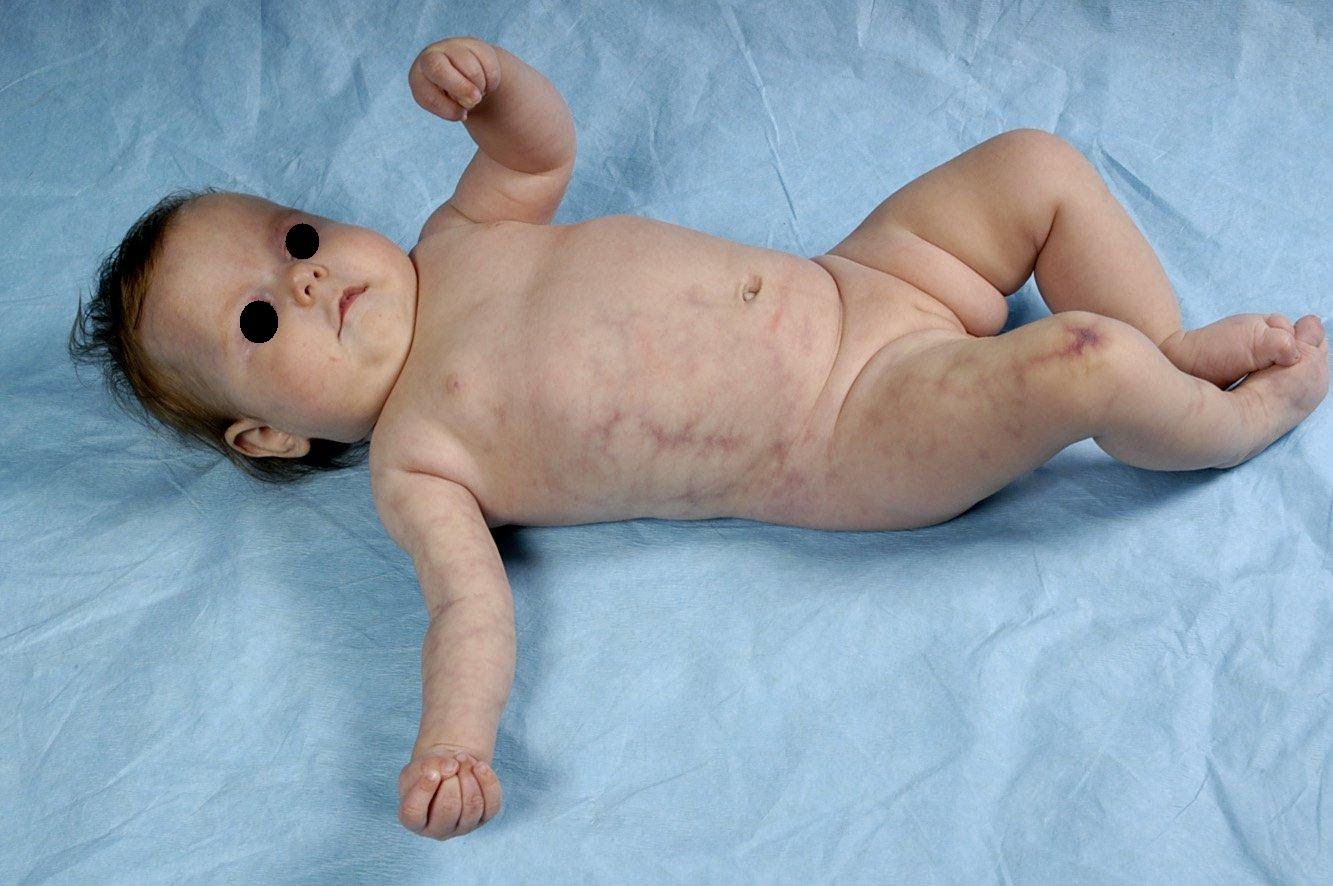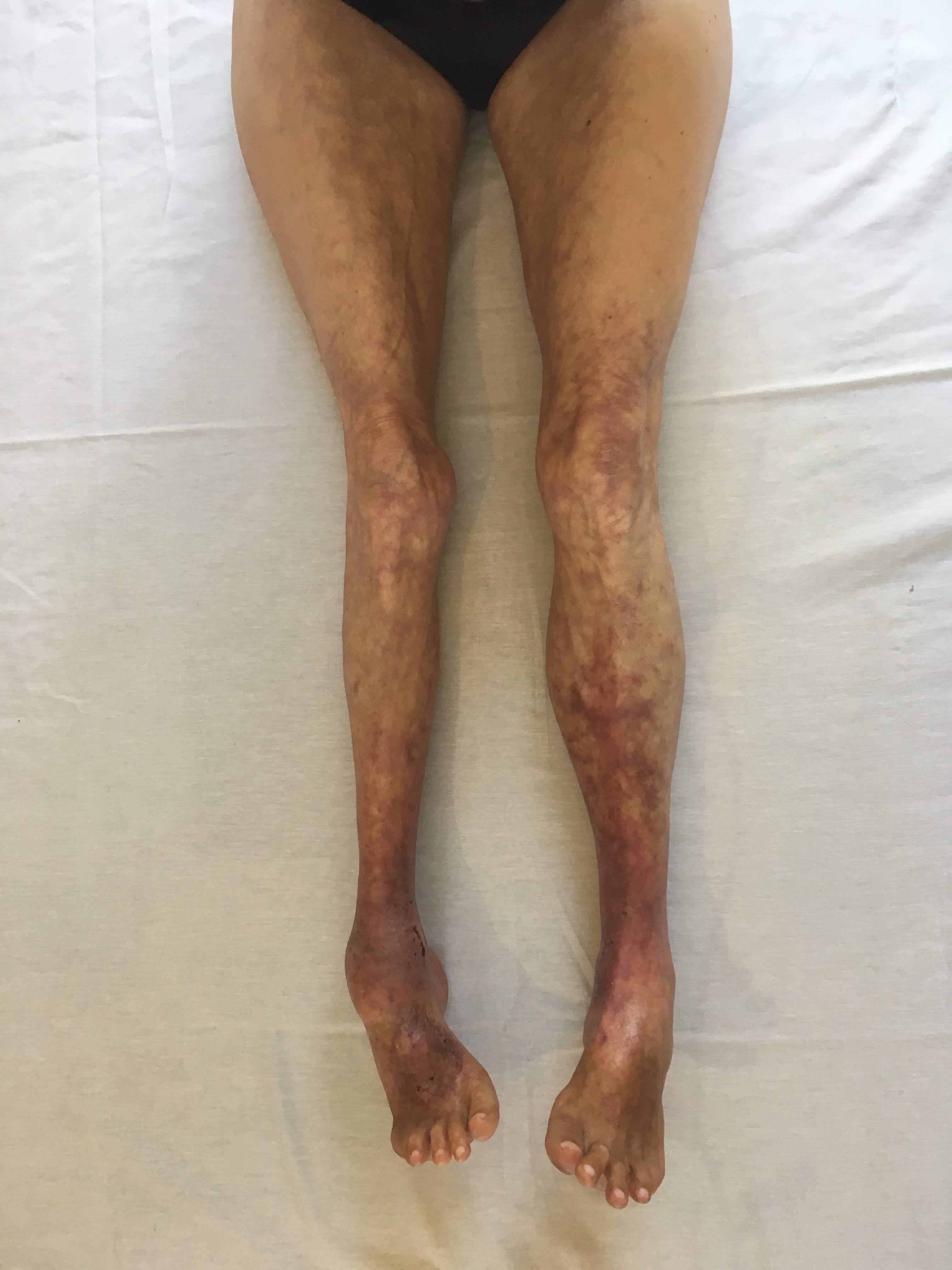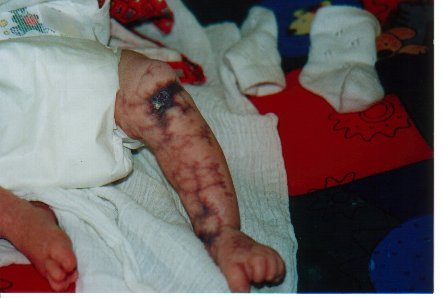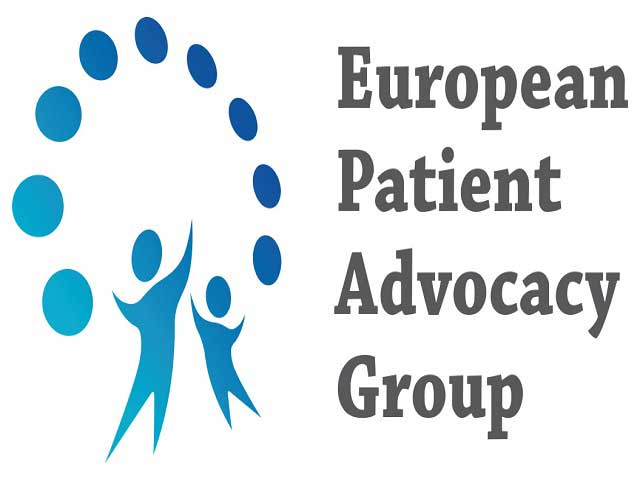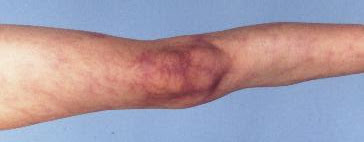
Cutis Marmorata Telangiectatica Congenita (CMTC or Van Lohuizen syndrome) is a rare skin condition that was first described by the Dutch pediatrician Van Lohuizen around 1920.
CMTC is a skin disorder in which dilated blood vessels are visible through the skin. Cutis marmorata means “mottled skin.” Telangiectatica refers to the abnormal blood vessels, and congenita means “congenital” or “present at birth.”
Usually, only a portion of the skin is affected, and the distribution on the body is asymmetrical—meaning one side is more severely affected than the other. A mottled skin appearance like that seen in CMTC can also occur in newborns or as a reaction to external factors such as cold. An important difference with CMTC is that this marbling is not constantly present.
Very little is known about the cause of CMTC. There are only a few reports in the medical literature of parents who have CMTC along with their children, or of siblings who share the condition. Based on the available literature, the chance of CMTC occurring again in a future child is considered to be very low. Whether this risk is also low for the children of someone with CMTC is currently uncertain.
Little is known about the heredity of Cutis Marmorata Telangiectatica Congenita (CMTC). Most people with CMTC are the only ones in their family affected by the condition. There are very few reports in medical literature of parents who, like their children, have CMTC, or of siblings both having the condition. From the available literature, it can at least be concluded that the chance of CMTC occurring again in a subsequent child is very low. However, whether this risk is also low for the future children of someone with CMTC cannot yet be said with certainty.
It is suspected that CMTC is a form of genetic mosaicism. This means that only certain cells and/or tissues carry a mutation in the DNA. Mosaicism arises after fertilization, during early embryonic development. In some cases, a mutation spontaneously occurs in one of the embryo’s cells. That mutation is then passed on to all cells that develop from that particular cell. All other cells, derived from unaffected cells, will not have this mutation. As a result, the mutations are only found in the affected tissues—such as in CMTC.
